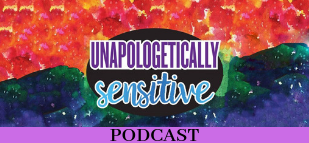SUMMARY
Patricia (she/her) and Alex (they/them) dive into the DSM diagnostic criteria for autism and break it down through a lived-experience lens. Instead of deficit-based language, they highlight autistic strengths, differences, and everyday realities of being AuDHD and neurodivergent. Expect honest stories, laughter, and relatable insights into what autism actually looks like outside of a clinical checklist.
SOME KEY THINGS DISCUSSED
- Differences in communication styles can lead to misinterpretations.
- Social reciprocity varies greatly among individuals.
- Nonverbal cues can be challenging for autistic individuals.
- Connection can be found in shared spaces without verbal engagement.
- Understanding emotional expression can be complex for many autistic people.
- The importance of lived experiences in understanding autism.
- Future discussions will continue to explore autism and its nuances.
- Compartmentalizing emotions while navigating daily stress
- The DSM and its fraught, deficit-based history in diagnosing autism
- Why autistic adults often don’t see themselves in the DSM criteria
- How the criteria ignore late-diagnosed, high-masking autistic people
- The difference between deficits vs. differences in neurodivergence
- “Nothing about us without us” in autistic advocacy and research
- Criteria A1: social-emotional reciprocity and how it actually shows up
- Autistic empathy: relating by sharing lived experiences
- Masking in facial expressions, tone, and eye contact
- The double-bind of asking too many vs. too few questions
- Why autistic small talk often centers around genuine interests
- Body doubling, parallel play, and co-regulation as neurodivergent connection
- The mismatch between verbal tone and facial expressions (alexithymia included)
- Wrapping up with how lived autistic stories—not DSM checklists—help people recognize themselves
- The urgency in making life decisions can be stressful.
- Autism is often misunderstood through a deficit-based lens.
SOUNDBITES
“The DSM told me nothing, but hearing about other people’s lived experience is how I realized I was autistic.”
“We use the word differences instead of deficits because it’s just a different way of communicating.”
“If you put two neurodivergent folks together, reciprocity looks totally different.”
“Sometimes I stare too hard at people’s eyeballs because I thought that’s what good eye contact was supposed to be.”
“Autism criteria is basically: how much do you make other people uncomfortable?”
“We just didn’t know that much back then.”
“Nothing about us without us.”
CHAPTERS (Please adjust for the addition of the intro)
00:00 Navigating Life Decisions and Stressors
02:48 Understanding Autism: A Personal Perspective
05:58 The DSM and Its Implications
08:34 Deficits vs. Differences in Autism
11:17 Social Reciprocity and Communication Challenges
14:15 Nonverbal Communication and Its Misinterpretations
17:14 The Complexity of Social Interactions
20:10 Finding Connection in Shared Spaces
23:00 Criteria A: Social-Emotional Reciprocity
25:57 Criteria A2: Nonverbal Communication Behaviors
28:50 Navigating Emotional Expression and Understanding
31:51 Conclusion and Future Discussions
ABOUT YOUR HOSTS:
Alex McLaughlin (they/them) has a Master’s in Social Work, and is a licensed independent clinical social worker (LICSW) on Wahpekute land (colonized as MN). Alex is an AuDHDer, PDAer, Queer, non-binary, fat, chronically ill, disabled, & a multi-racial (1/8th Chinese & white passing) human with lived experience of OCD. As a late diagnosed adult, Alex has felt different and embraced their quirky, eccentric nature—what they now recognize as undiagnosed AuDHD. This lifelong experience of masking and curiosity about people inspired their passion for understanding and serving others, ultimately shaping their path today.
Alex provides neurodivergent and Queer-affirming therapy and Autism and ADHD assessments on Wahpekute land (colonized as Minnesota). Their work is grounded in intersectional feminism, ecological systems theory, and a commitment to decolonizing mental health care. They support clients in exploring how interconnected systems shape their experiences, while fostering resilience, empowerment, and self-understanding—especially for Neurodivergent, 2SLGBTQIA+, BIPOC/POGM, and disabled communities. Trained in ERP, I-CBT (including ND-affirming I-CBT), sand tray therapy, TF-CBT, and somatic approaches, Alex also brings lived experience and is pursuing IFS to deepen their parts-informed practice.
Coaching, consulting and training coming soon! Head here to be notified when this practice opens!
Head to Alex’s website here to connect further: Here
Patricia Young (she/her) has a Master’s Degree in Social Work, and was a Licensed Clinical Social Worker for over 17 years, but she is now exclusively providing coaching. She knows what it’s like to feel like an outcast, misfit, and truthteller. Learning about the trait of being a Highly Sensitive Person (HSP), then learning she is AuDHD with a PDA profile, OCD and RSD, helped Patricia rewrite her history with a deeper understanding, appreciation, and a sense of self-compassion. She created the podcast Unapologetically Sensitive and Unapologetically AuDHD to help other neurodivergent folks know that they aren’t alone, and that having a brain that is wired differently comes with amazing gifts, and some challenges. Patricia works online globally working individually with people, and she teaches Online Courses for neurodivergent folks that focus on understanding what it means to be a sensitive neurodivergent. Topics covered include: self-care, self-compassion, boundaries, perfectionism, mindfulness, communication, and creating a lifestyle that honors you
Patricia’s website, podcast episodes and more here!
References
DSM 5 in Pictures from Neurodivergent Insights: https://neurodivergentinsights.com/dsm-5-criteria-for-autism-explained-in-picture-form/?srsltid=AfmBOorIPG6mwmRUXPaPa8ttWigArdiS12OojrXcsDRqpZtSu339uw8-
Additional LINKS
- Email us with questions related to the podcast

